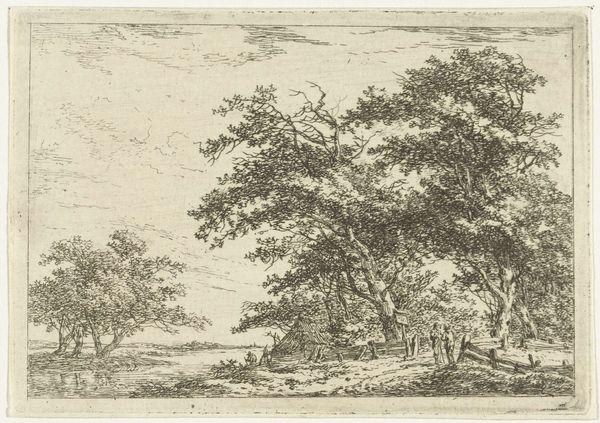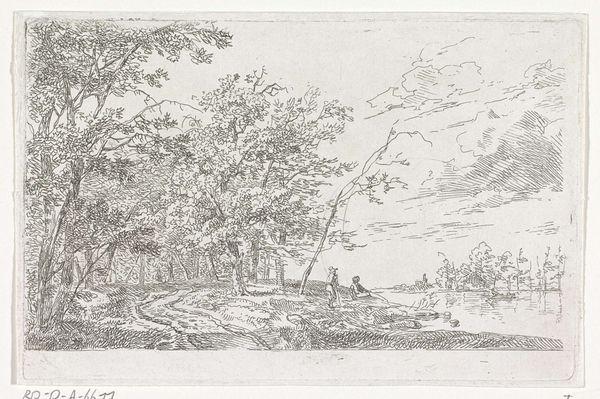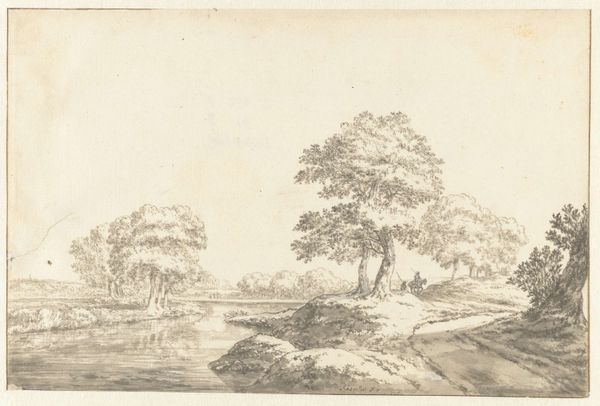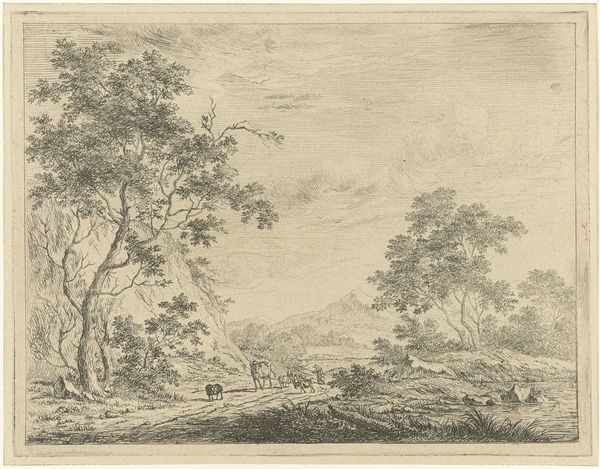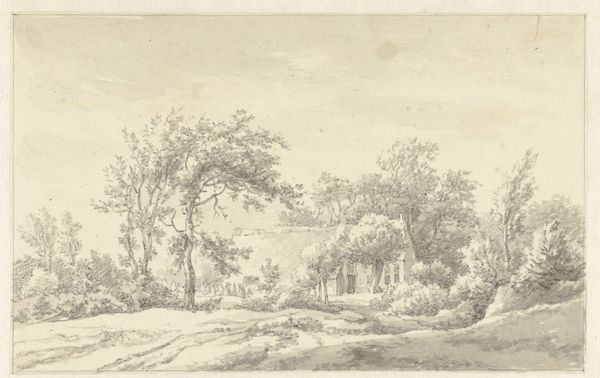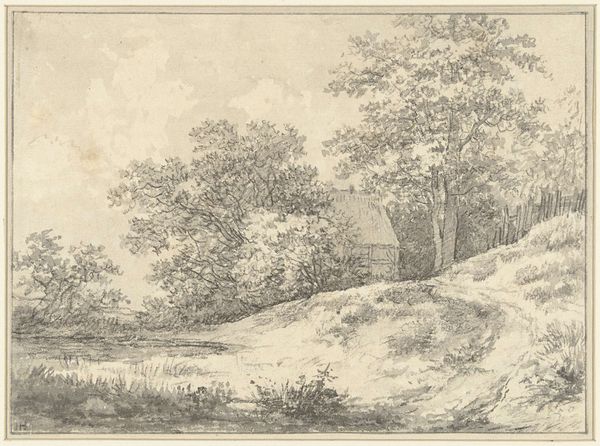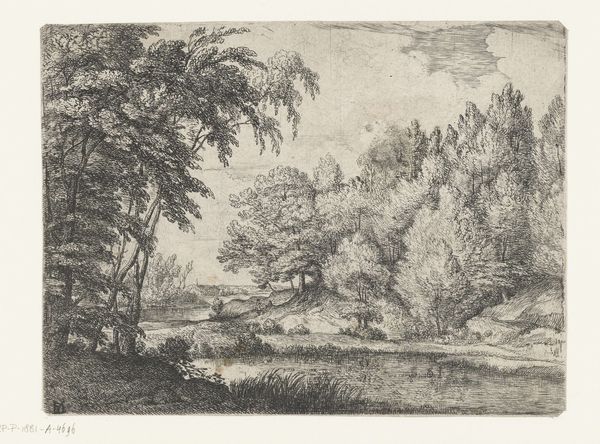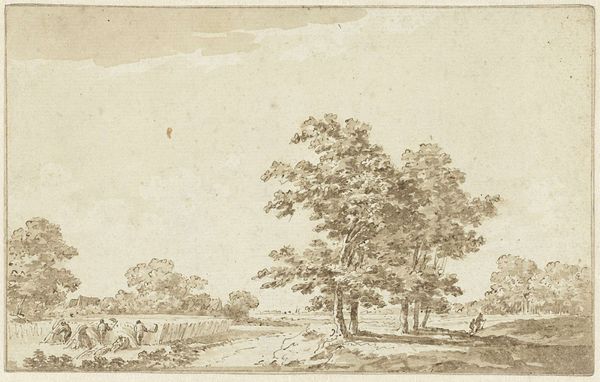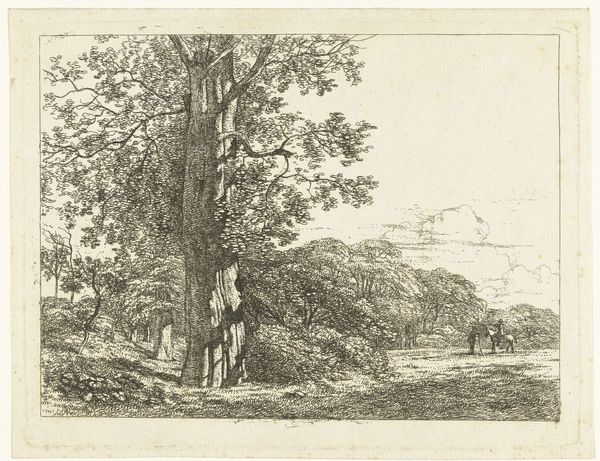
drawing, ink
#
landscape illustration sketch
#
drawing
#
pen illustration
#
pen sketch
#
landscape
#
river
#
personal sketchbook
#
ink
#
forest
#
ink drawing experimentation
#
romanticism
#
pen-ink sketch
#
line
#
pen work
#
sketchbook drawing
#
storyboard and sketchbook work
#
sketchbook art
Dimensions: height 94 mm, width 144 mm
Copyright: Rijks Museum: Open Domain
Curator: Here we have an ink drawing simply titled "Landschap met bos en rivier," or "Landscape with Forest and River" in English, dating roughly between 1800 and 1882, unsigned. What strikes you about it? Editor: It feels immediately… delicate. The fine, almost scribbled lines create a sense of gentle movement, a breeze perhaps rustling through the leaves. Curator: The romanticism period prized the aesthetic power of nature and valued individual emotional response to its grandeur. Depictions like this often served as reflections of inner feeling, particularly in contrast to the emerging industrial landscape of the time. How does that impact your reading of the piece? Editor: That context enriches my understanding. The lack of industrial presence becomes almost a statement. But even without that knowledge, I see a very balanced composition. The strong horizontal of the river contrasts beautifully with the verticality of the trees. Semiotically, the river could signify flow or change. Curator: And the figures on the bank? Consider how the artist has situated them. They're quite small in comparison to the natural elements. Editor: True, and somewhat removed, though definitely inhabiting it peacefully. That is interesting when thought of from a gendered position. The figures have broken from social structures to engage in leisure near this particular space; this makes me wonder if they are participating in forms of freedom that might have otherwise been inaccessible. Curator: Their presence shifts the focus beyond mere aesthetic appreciation. In placing the human element secondary to the scope of nature, it touches upon philosophical questions of the self in relation to the larger world. The sketch aesthetic invites the viewer to ask "What specific circumstances allowed for such pastoral freedom, for whom, and under what circumstances?" Editor: The technique reinforces this invitation. It feels less like a declaration and more like a tentative inquiry, appropriate to the scale. Though I agree with your focus on accessibility in public space, formally speaking, the use of line, and its tonal variations achieved simply through density, create remarkable depth, almost giving a layered quality, reminiscent of topographical maps. Curator: Exactly, which is an evocative way of speaking about power! What initially appears to be simply an image of tranquil beauty is steeped in much larger considerations, don't you think? Editor: Yes. Looking closer, what seemed simple opens into something much deeper, layered, more challenging. Thank you!
Comments
No comments
Be the first to comment and join the conversation on the ultimate creative platform.
